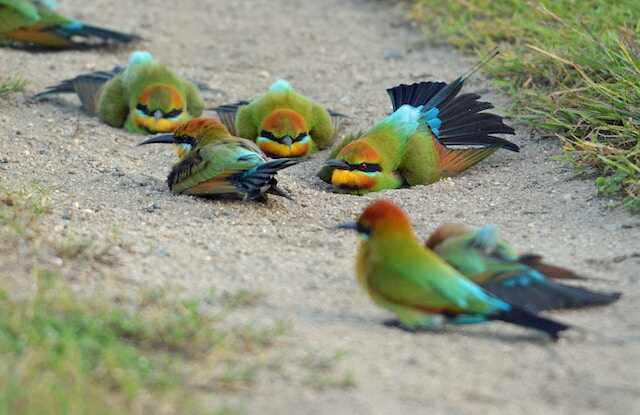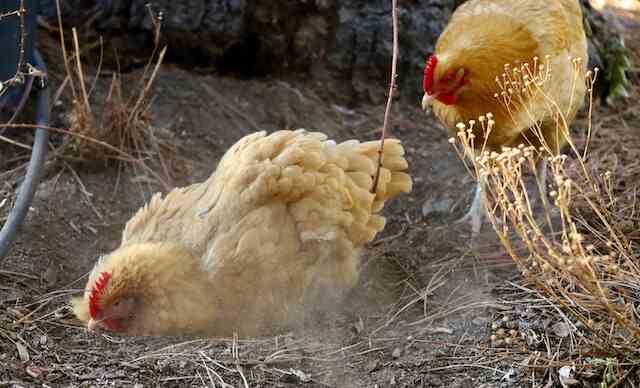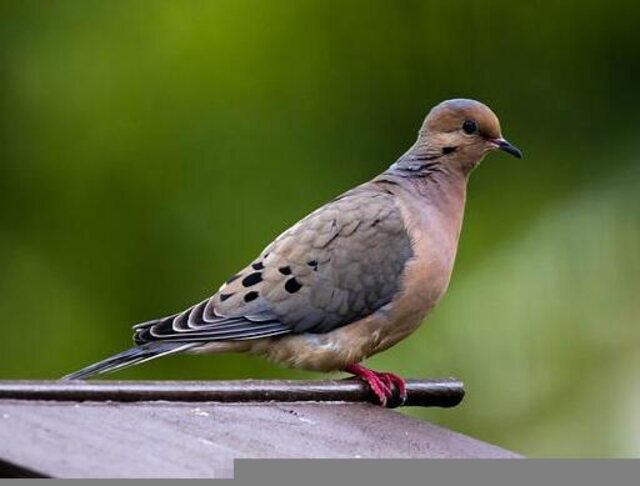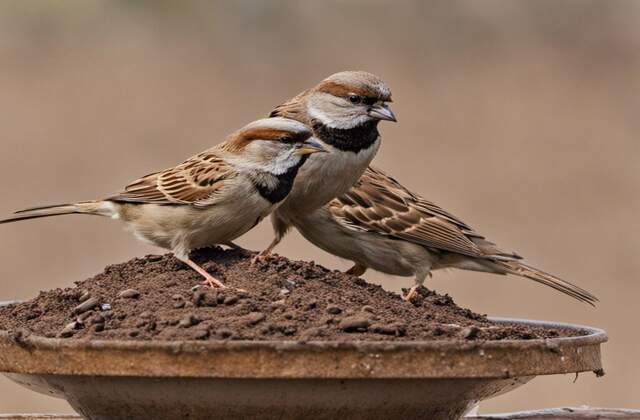As a birdwatcher, I have always been fascinated by the unique behaviors and habits of animals. One of the quirkiest habits I’ve come across is birds taking dirt baths. At first glance, it may seem odd to see a bird flapping around in the dirt, but this behavior is actually an essential part of their hygiene routine.
Birds engage in various bathing behaviors, including dusting and water bathing, to keep themselves clean and healthy. However, dirt bathing, also known as dust bathing, is a specific type of bathing behavior observed in many avian species. In this article, we will explore the reasons behind this behavior, examine the benefits of dirt baths for birds, and uncover the science behind avian hygiene practices.
Table of Contents
- 1 Key Takeaways:
- 2 Why Do Birds Take Dirt Baths?
- 3 Understanding Bird Bathing Behavior
- 4 The Science Behind Dust Bathing
- 5 Benefits of Dirt Baths for Birds
- 6 Why Do Some Birds Roll in the Dust?
- 7 The Hygiene Practices of Avian Species
- 8 Exploring Dust Bathing in Different Bird Species
- 9 The Role of Dust in Avian Hygiene
- 10 Uncovering the Science Behind Avian Hygiene Practices
- 11 The Importance of Dust Baths for Birds’ Well-being
- 12 Environmental Impact of Bird Bathing Behaviors
- 13 Conclusion
- 14 FAQs
- 14.1 What is the science behind dust bathing in birds?
- 14.2 What are the benefits of dirt baths for birds?
- 14.3 Why do some birds roll in the dust instead of taking a traditional dirt bath?
- 14.4 What are the hygiene practices of avian species?
- 14.5 How does dust play a role in avian hygiene?
- 14.6 Do different bird species exhibit different dust bathing habits?
- 14.7 What is the science behind avian hygiene practices?
- 14.8 How important are dust baths for the well-being of birds?
- 14.9 What is the environmental impact of bird bathing behaviors?
- 15 Author
Key Takeaways:
- Birds engage in various bathing behaviors, including dusting and water bathing, to keep themselves clean and healthy.
- Dirt bathing, also known as dust bathing, is a specific type of bathing behavior observed in many avian species.
- In this article, we will explore the reasons behind this behavior, examine the benefits of dirt baths for birds, and uncover the science behind avian hygiene practices.

Why Do Birds Take Dirt Baths?
Birds take dirt baths for vital reasons. Dust helps rid them of pests and excess oils while acting as a natural cooling mechanism on hot days. It maintains feathers, ensuring insulation and functionality, and serves as an instinctive behavior with social and territorial significance. This practice is crucial for a bird’s overall health and well-being.
Understanding Bird Bathing Behavior
Before we can explore why birds take dirt baths, it’s important to understand their overall bathing behavior. Birds engage in various bathing methods as part of their hygiene routines, including dusting and water bathing.
Dusting, also known as bird dusting or bird bathing, is a behavior in which birds fluff their feathers and rub themselves with dust or sand. This behavior helps to remove excess oil, dirt, and parasites from their feathers and skin.
Water bathing, on the other hand, involves birds submerging themselves in water and splashing it over their bodies. This behavior helps to clean their feathers and skin, remove excess oil, and regulate their body temperature.
Both dusting and water bathing are essential parts of avian hygiene practices. Birds engage in these behaviors regularly to maintain their overall health and well-being.
Bird dusting habits are influenced by several factors, including the bird’s species, habitat, and environmental conditions. Some birds dust or bathe more frequently than others, depending on their specific needs.
Types of Bird Dusting Habits
There are different types of bird dusting habits, depending on the species and environmental conditions. For example, some birds may dust themselves in dry, sandy areas, while others may use moist soil or mud. Some birds may dust themselves alone, while others may dust in groups.
Birds may also use different body parts to dust themselves. For example, some birds use their wings to create a dust cloud around their bodies, while others may roll their entire bodies in the dust.
Overall, bird dusting habits are complex and varied, reflecting the diversity of avian species and their unique needs for hygiene and well-being.
The Science Behind Dust Bathing
One of the unique bathing behaviors observed in avian species is dust bathing, also known as dirt bathing. This behavior involves birds taking a bath in dry soil, dust, or sand. Dust bathing is observed in various bird species across the globe, from sparrows to ostriches. But why do birds engage in this behavior?
The primary reason that birds take dirt baths is to maintain their hygiene. By coating themselves in dust or sand, birds can remove excess oil, dirt, and parasites from their feathers and skin. Dust bathing is especially important for birds that inhabit dry, arid environments, where water may not be readily available for traditional water bathing.
Dust bathing is also believed to help regulate body temperature. By rolling around in the dust, birds can create a layer of insulation around their bodies, protecting them from extreme heat or cold. Additionally, the dust itself may help to absorb excess moisture on the bird’s skin or feathers, preventing the growth of harmful bacteria or fungi.
Scientists have also discovered that dust bathing may have a social component. Some bird species engage in communal dust bathing, where several birds will gather together to bathe in the same dust bath. This behavior is thought to help strengthen social bonds and reduce stress levels in birds.
Overall, dust bathing is a crucial aspect of avian hygiene practices. By understanding the science behind this behavior, we can gain deeper insights into the remarkable ways in which birds have evolved to maintain their cleanliness and health.
Benefits of Dirt Baths for Birds
Dirt baths offer several key benefits for birds. From controlling parasites to maintaining feather quality, dust baths are integral to the overall hygiene and well-being of avian species.
Parasite Control
One of the primary benefits of dirt baths for birds is parasite control. Through dust bathing, birds can remove excess oil and dirt from their feathers, which may harbor parasites like lice and mites. The abrasive action of the dust also helps to physically remove these parasites, reducing the risk of infestation and improving overall health.
Feather Maintenance
Dirt baths also help to maintain feather quality in birds. Dusting removes excess oil from feathers, which can cause them to become greasy and matted. This can impair flight and insulation, putting birds at risk for hypothermia or other dangers. By regularly engaging in dirt baths, birds can keep their feathers clean and free of excess oil, maintaining their insulating and flight capabilities.
Body Temperature Regulation
Dirt baths may also play a role in regulating the body temperature of birds. Certain types of dust and soil may have insulating properties that protect birds from extreme heat or cold. Additionally, the act of dust bathing itself may help to regulate body temperature as birds expose their skin to the cooler soil below.
Overall, dirt baths are an essential part of avian hygiene practices. By providing parasite control, feather maintenance, and temperature regulation, dirt baths help to keep birds healthy and thriving in their natural habitats.

Why Do Some Birds Roll in the Dust?
While many bird species engage in dust bathing, some take it a step further by rolling in the dust. This behavior may seem peculiar, but it has specific reasons behind it that are connected to avian hygiene practices.
When birds roll in the dust, it allows the dust to penetrate deeper into their feathers, reaching areas that a simple dust bath may not. This helps to dislodge any parasites or debris that may be stuck, providing a more thorough cleaning. Additionally, rolling in the dust stimulates the preen gland, which secretes oil that birds spread across their feathers during preening. This oil contains beneficial bacteria that help to maintain feather quality and protect against harmful pathogens.
While some birds may prefer to roll in the dust over a traditional dirt bath, the underlying reasons for this behavior are rooted in avian hygiene. By rolling in the dust, birds are taking an active role in maintaining their overall well-being.
The Hygiene Practices of Avian Species
As a passionate birdwatcher, I have learned that avian species have unique hygiene practices that differ from other animals. Birds have evolved various ways to maintain their cleanliness and overall health, and this includes dust bathing. Dust bathing is a specific type of bathing behavior observed in many bird species, where birds roll in dirt to clean themselves.
Aside from dust bathing, birds also engage in preening, which involves rearranging their feathers, and water bathing, which involves dipping their feathers in water to rinse off dirt and parasites. These behaviors are essential to avian hygiene practices and contribute to their survival in the wild.
It is fascinating to see how birds have developed such unique hygiene practices that have evolved over time. These practices have contributed to their adaptability and ability to thrive in various environments. Understanding the hygiene practices of avian species can help us appreciate their complexity and promote conservation efforts to protect these animals and their habitats.
Exploring Dust Bathing in Different Bird Species
Dust bathing is a behavior observed in many avian species across the globe. While the basics of the behavior are similar across species, variations in dust bathing habits exist, providing insight into the evolutionary significance of this behavior.
For instance, while some species of birds prefer to take dust baths in secluded spots, others are communal and roll in the dust together. Additionally, the composition of the dust used for dust bathing varies between species. Some birds prefer fine, powdery soil, while others opt for coarser sand or dirt.
One species commonly observed taking dust baths is the American Robin. These birds will often kick up dirt and bathe in the resulting dust cloud, using their wings to spread the dust evenly across their bodies.
| Bird Species | Dust Bathing Habits |
|---|---|
| House Sparrow | Often bathes in loose soil or sand, sometimes in groups. |
| European Starling | Frequently takes dust baths in fields or on rooftops, sometimes in groups. |
| American Goldfinch | Uses fine dust for bathing and may sing while dusting. |
These variations in dust bathing habits highlight the adaptability of avian species and their ability to evolve and innovate new ways to maintain their hygiene. Through further study and observation of dust bathing habits in different bird species, researchers can gain a deeper understanding of the significance of this behavior and its role in avian health and well-being.

The Role of Dust in Avian Hygiene
While dust might seem like an unusual substance for maintaining hygiene, it is integral to the health of many avian species. Dust has unique properties that allow birds to control parasites, maintain feather quality, and regulate body temperature.
When birds take dirt baths, they spread dust throughout their feathers, which absorbs excess oil and moisture. The dust can also suffocate and kill external parasites, such as lice and mites. In addition, the abrasive nature of dust helps birds to clean and maintain their feathers, preventing feather degradation that can lead to health problems.
Dust baths also have a cooling effect on birds. The dry dust coats their feathers, which acts as an insulator and helps to regulate body temperature in hot environments.
In summary, the role of dust in avian hygiene practices cannot be overstated. Dust baths are essential for the health and well-being of many bird species, and without access to clean dust, birds can suffer from a range of health problems.
Uncovering the Science Behind Avian Hygiene Practices
As a dedicated bird enthusiast, I find the science behind avian hygiene practices truly fascinating. Birds have evolved unique ways to keep themselves clean and healthy, and their behavior of taking dirt baths is an excellent example of their adaptability.
The reason birds take dirt baths lies in the properties of the dust. Dust particles have sharp edges that can cut and suffocate parasites, and they also help to absorb excessive oil from feathers, preventing feather degradation. During dusting, birds shake their feathers to remove dirt and debris, and this behavior also helps them regulate their body temperature by removing excess heat from their feathered coats.
Avian hygiene practices have evolved over millions of years, and they continue to do so. Preening, dusting, bathing, and pre-roosting behaviors have developed to help birds maintain a healthy and adaptive lifestyle in their environments.
Through scientific research, we have found that specific areas in a bird’s brain are responsible for controlling grooming behavior, and this behavior also has hormonal and biochemical components. For example, the hormone corticosterone has been found to be associated with feather growth and maintenance. Therefore, a deficiency in corticosterone may lead to reduced feather quality and increased susceptibility to parasites.
In summary, avian hygiene practices are an essential part of birds’ lives. Understanding the science behind these practices can provide valuable insights into the evolutionary significance of bird behavior. By unraveling the complexities of avian hygiene, we can better appreciate the remarkable adaptability of these incredible creatures.

The Importance of Dust Baths for Birds’ Well-being
As we have explored in previous sections, dust bathing is an essential part of avian hygiene practices. While the behavior may seem peculiar to us, it offers numerous benefits for birds. In this section, we will examine the importance of dust baths for birds’ well-being.
Controlling Parasites: Dust baths are an effective way for birds to control parasites. The dust particles cling to the insects and absorb their oils, effectively dehydrating and killing them. By removing parasites, birds can avoid the discomfort and harm that they may cause.
Maintaining Feather Quality: Dust baths are also crucial for maintaining the quality of feathers. The dust particles absorb excess oil and moisture, which can lead to feather degradation and loss of insulation. Clean feathers are essential for maintaining body temperature and facilitating flight, making dust baths critical for aerial species.
Regulating Body Temperature: Dust baths also help birds regulate their body temperature. By removing excess oil and moisture, the dust particles help to dissipate heat and prevent overheating. This is especially important for desert-dwelling species that face extreme temperatures.
Providing Stress Relief: Dust bathing has been shown to provide birds with stress relief. The behavior is often associated with relaxation and grooming, which can reduce stress and anxiety. This is especially important during mating and nesting seasons when birds may experience elevated stress levels.
Overall, dust baths play a vital role in the physical and mental well-being of birds. By understanding the importance of this behavior, we can appreciate the remarkable adaptations and evolutionary processes that have led to it.
Environmental Impact of Bird Bathing Behaviors
Birds play a significant role in maintaining the ecological balance of ecosystems. However, their bathing behaviors, including dust baths, can have an impact on the environment.
Bird dusting habits can disturb the soil and disrupt the growth of plant species. For example, when birds dust bathe in areas with sparse vegetation, their activities can cause soil erosion or expose the soil to excessive sunlight. This can lead to further degradation of the area and affect other organisms in the ecosystem.
Avian hygiene practices are important for the overall health of birds and their habitats. Therefore, it’s necessary to understand these practices and their impacts on the environment. As human activities continue to alter natural habitats, it’s crucial to support and conserve these practices for the well-being of avian species and their ecosystems.
Conclusion
In conclusion, I find the behavior of birds taking dirt baths to be a fascinating topic. Through this article, I have explored the reasons behind this behavior and the benefits it offers for birds. From controlling parasites to regulating body temperature, dirt baths play a crucial role in the overall health and well-being of avian species.
By understanding the science behind avian hygiene practices, we gain insights into the evolutionary significance of these behaviors. Through dust bathing and other rituals, birds have evolved unique ways to maintain their cleanliness and adapt to different habitats.
Supporting Avian Hygiene Practices
It’s important for us to support and conserve avian hygiene practices in their natural habitats. This means preserving habitats and reducing the impact of human activities on bird populations. By protecting birds and their environments, we can ensure that these incredible creatures continue to thrive.
Overall, the behavior of birds taking dirt baths is a testament to the ingenuity and adaptability of these remarkable creatures. As I conclude this article, I am reminded of the many wonders of the natural world. By exploring the behaviors and rituals of avian species, we gain a greater appreciation for the complexity and diversity of life on our planet.

FAQs
What is the science behind dust bathing in birds?
Dust bathing is a specific bathing behavior observed in many avian species. It helps birds to keep themselves clean and healthy by removing dirt, oils, and parasites from their feathers.
What are the benefits of dirt baths for birds?
Dirt baths offer several benefits for birds. They help to control parasites, maintain feather quality, regulate body temperature, and contribute to overall hygiene and well-being.
Why do some birds roll in the dust instead of taking a traditional dirt bath?
Rolling in the dust is a behavior observed in certain bird species. It may have specific reasons that are yet to be fully understood, but it is believed to serve a similar purpose of cleaning and maintaining feather quality.
What are the hygiene practices of avian species?
Avian species have unique hygiene practices that include preening, dust bathing, and water bathing. These practices are essential for maintaining feather quality, removing dirt and parasites, and overall hygiene.
How does dust play a role in avian hygiene?
Dust plays a crucial role in avian hygiene by aiding in the removal of dirt and parasites from bird feathers. It has properties that help birds to keep their feathers clean and maintain their overall cleanliness.
Do different bird species exhibit different dust bathing habits?
Yes, different bird species have their own unique dust bathing habits. Some may prefer rolling in the dust, while others may engage in traditional dirt baths. These variations highlight the diversity in avian bathing behavior.
What is the science behind avian hygiene practices?
Avian hygiene practices have evolved over time and are rooted in biology and the need to maintain cleanliness and health. Scientists study these behaviors to understand the evolutionary significance and adaptations of avian species.
How important are dust baths for the well-being of birds?
Dust baths are crucial for the overall well-being of birds. They contribute to maintaining feather quality, controlling parasites, regulating body temperature, and providing stress relief. Dust baths play a significant role in the lives of avian species.
What is the environmental impact of bird bathing behaviors?
Bird bathing behaviors, including dust baths, can have an impact on the environment. The disturbance of dust and soil during dust baths can affect soil composition and potentially contribute to erosion. Conservation efforts aim to support and conserve avian hygiene practices in their natural habitats.


